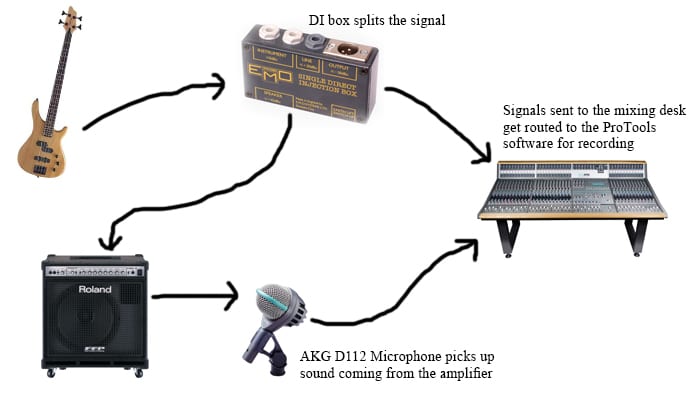Setup
During week 9, we had the task of recording the main vocals for our song. To get a pure vocal recording with no interfering sounds (such as reverb) we made sure to have our vocalist, Zoe, perform in the dead room. The microphone we used was a AKG414. This condenser microphone is a good all-round mic that has a suitable frequency range to record vocals.
With the use of the foldback system, we got the levels set up so that Zoe was able to perform comfortably.
We also had to adjust her levels. We did this by having her sing along the song. While she was singing, we altered her gain so that the sound would not peak. However, while listening to her sing, peaking was still present along with a terrible popping sound. This sound is known as a plosion. Some consonants build up air pressure within the mouth. When that air is released, it hits the microphone and causes a harsh low frequency popping sound. It is most noticable when recording the letters P and T.
Instead of using a pop filter, we decided to alter the proximity and axis between Zoe and the microphone. Proximity is the distance between the vocalist and the microphone. When a microphone is too close to a vocalist, plosions may occur. But when a microphone is too far away, the lower frequencies may be lost. Axis is the angle at which the microphone is facing. The more a microphone is turned away from a vocalist, the thinner the sound becomes.
The image below shows the two lines of tape that represented where Zoe had been standing during the setup and recording process.
The Recording Process
This week, we had Zoe sing along purely with our original recordings; we did not use the official song as a backing track. We took a few practice takes so that Zoe could figure out where to start singing in the song. Once she was ready, we began recording. There were short periods during the process when we decided to solo her vocal channel just so we could listen purely to her singing. We did this so that we could make sure there were no technical errors or mistakes being made.


